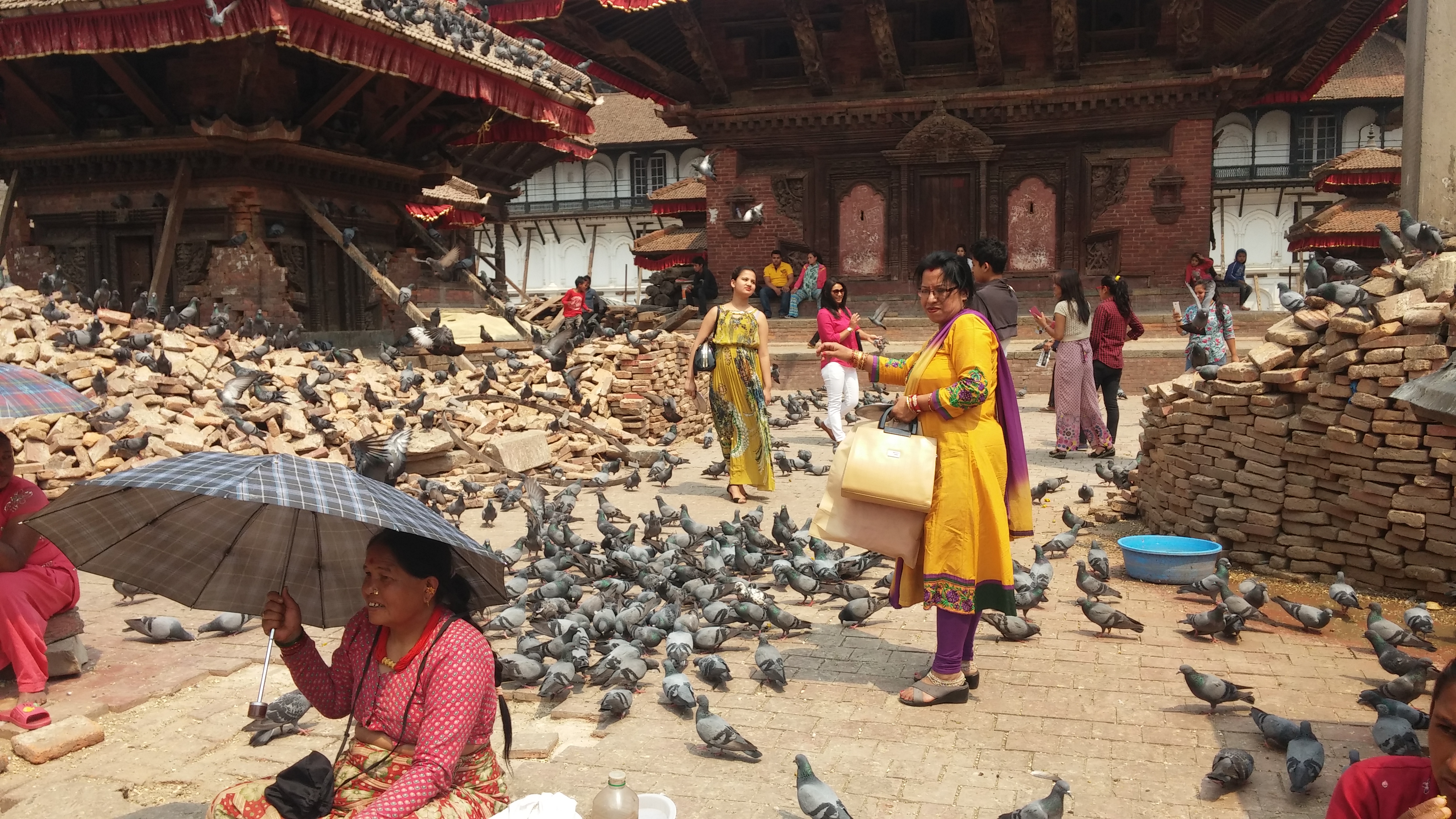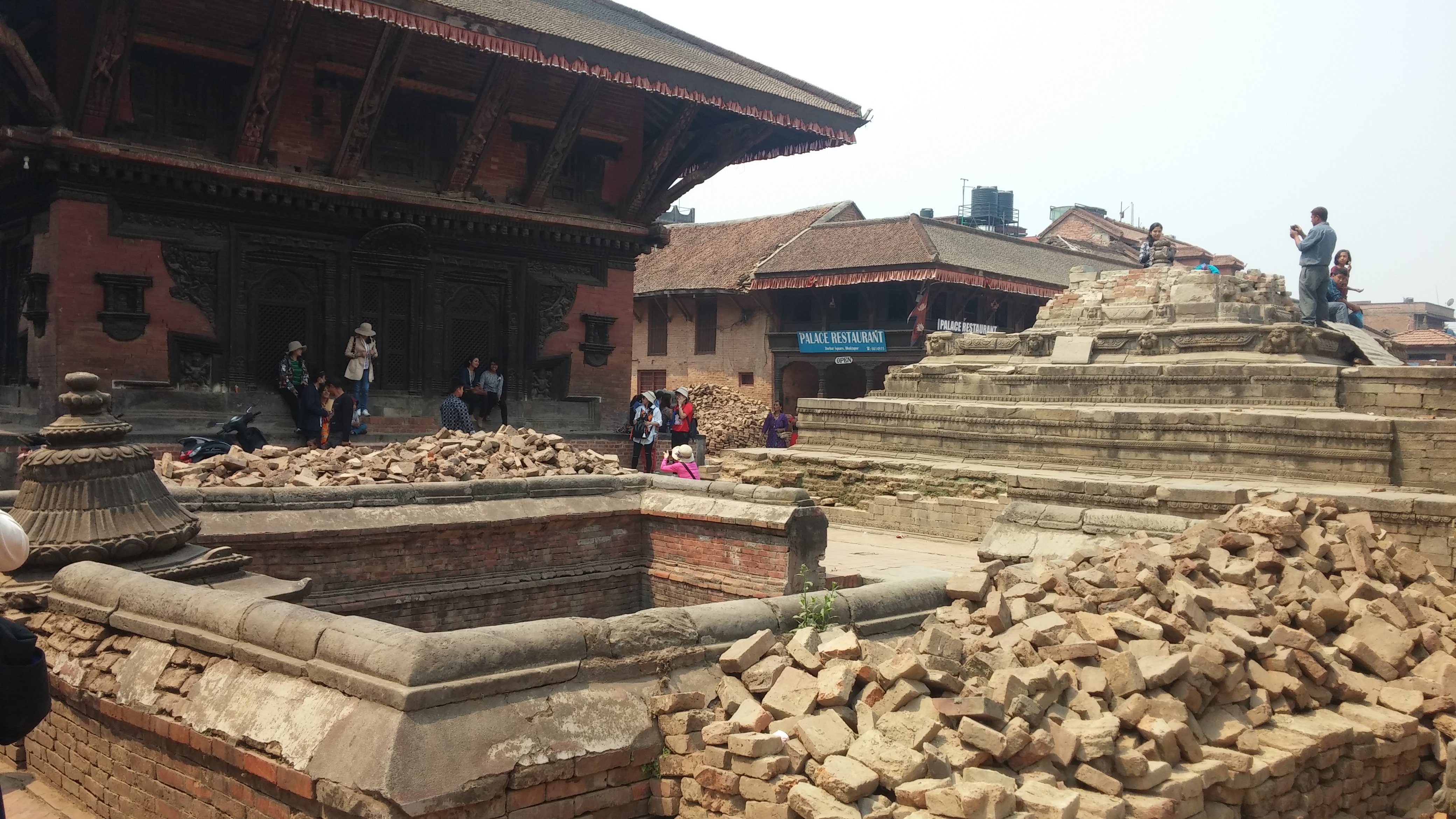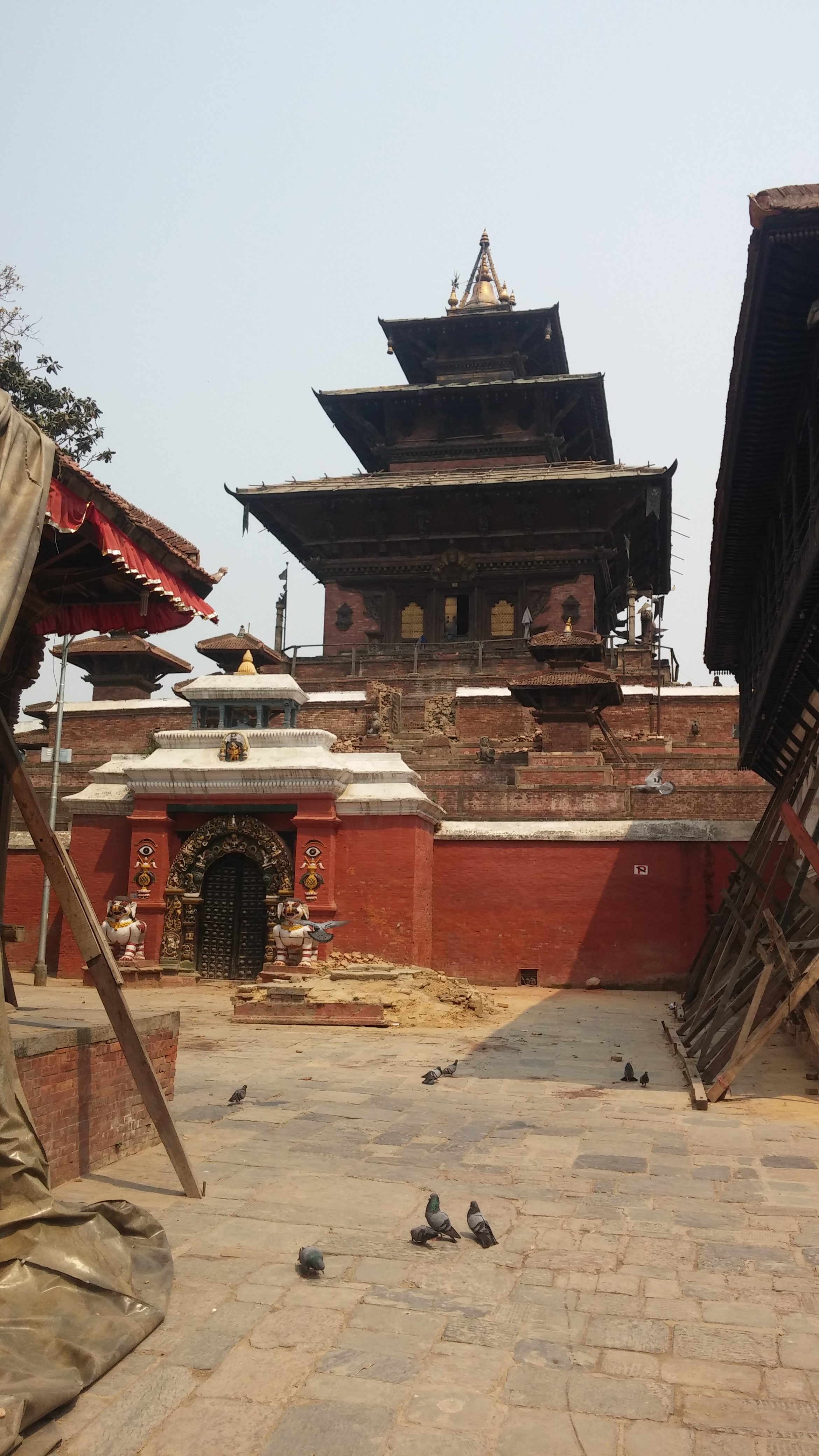Visit Nepal. Please. We need you. Nepal is open and welcomes you.
That is what the people of Nepal want the world to know. The Himalayan nation still struggles to recover, more than a year after it was struck by the destructive 7.8 earthquake. That does not dampen the spirit of the Nepalese. They are warm, friendly and eager to open their homes, share their culture and traditions, and ensure the comfort of their visitors. They also want to share their stories of where they were the day the earthquake hit, and voice their frustration with the lack of rebuilding progress.

“I felt the earth sink beneath my feet,” recalls Baba Ranjit, a shop owner in the popular tourist shopping district of Thamel. “I didn’t know it was an earthquake at first. But people were running outside, shouting. So many people shouting.
“People on motorbikes dropped them in the middle of the road and ran. It lasted 54 seconds, but it felt like 10 or 15 minutes. It was really horrible for me. A nightmare.”
Pradeep Kaphle, a journalist and the president of the Nepali UNESCO Demauli club, was finishing lunch when he noticed the room around him moving. Accustomed to the small earthquakes that are common in Nepal, for the first 10 or 15 seconds, he thought nothing of it.
But when his house kept shaking for 30, 45, 50 seconds, a minute… he ran out into the streets where he was greeted by his family who rushed home from visiting neighbors to be by his side. They stood together in the street, weeping in fear and shock.
Nepal is not a relaxing vacation destination. It demands a willingness to go with the flow, a heartiness and a heartfulness. Necessities that are considered basic in the West are optional here. The bacteria in the water is harmless to the Nepalese, but famously disastrous for Westerners. There is wi-fi – Nepalese LOVE Facebook! – but electricity is rarely on during the day, and quite often not on at night either.
A year after the earthquake, it is hard for a newcomer to distinguish buildings that have been falling down for decades from those that were destroyed by the earthquake. So much about Kathmandu feels wild, chaotic, with just a hint of infrastructure and order. The dry, dusty air, or perhaps the higher altitude of Kathmandu has a way of aging everything. Some delicately carved wooden beams on an ancient shrine in Patan are over 100 years old, some are about 20. They look almost identical. Which piles of bricks and rubble that line so many of the streets of Kathmandu are old – which new?

From 2006 to 2015, Nepal had made significant strides to move out of being one of the poorest countries in the world. The landlocked country has struggled for hundreds of years with domestic and international conflicts, drought and corruption. Children were coming off the streets and going to school, literacy was up, unemployment was down – the percentage of the population living in poverty was decreasing. Things were going well.
All of that progress was wiped away on April 25, 2015 when a 7.8 earthquake and a 7.3 aftershock 3 weeks later killed nearly 9,000 people and injured almost 22,000 more, and left 3.5 million homeless. 750,000 homes and 7,000 schools as well as historic and sacred Buddhist and Hindu sites were destroyed or severely damaged.
Buddhist monk, Lopon Pem Seri Sherpa, abruptly ended a teaching trip in Singapore and rushed home to help when the news of the tragedy started to filter out of Nepal. He described the airport terminal as a maze of shrink-wrapped pallets. Supplies had already begun to arrive from around the world. The streets outside the airport were filled with people unwilling to return to their homes for fear of aftershocks, more damage and more death.
The epicenter of the 7.3 aftershock three weeks later was Lopon Pem’s village of Charikot Dolakha. It was completely leveled, claiming the life of his cousin who was at work when the building she was in collapsed.
The earthquake changed the landscape of Kathmandu. Toppled temples and historic buildings are being held up by giant wooden beams braced against the streets around them. Tent cities of gray canvas and blue plastic tarp cover many of the flat spaces. A year after they were erected by international aid groups as temporary housing for displaced Nepalese, most tent cities are still occupied. The canvas and plastic tarp tents do not protect their inhabitants from the blistering summer, torrential monsoons and frigid winter. Like everything else in Kathmandu, the tents are aging. Very few of the damaged buildings have been repaired or torn down, and very few new homes have been built.

It is difficult to not ask why more hasn’t been done. Is it because the new government didn’t have policy in place to address such mass devastation? Was it the Indian fuel embargo in the midst of the relief efforts, in protest of the new constitution that was written by the new government? Was it corruption?
“After the earthquake everything was damaged, the tourism sector and economic part was very weak,” said journalist Pradeep Kaphle.
“One year later, tourism and economy is getting better now, but the government is very weak. Many victims are still in the camps, don’t have houses. The earthquake made the government weaker.”
One night walking in Boudha, we heard a strange banging noise, not unlike the sound of a garage door dropping to the ground, followed by nervous, shouting voices in the street: a common, mild earthquake. Nepalese are not as nonchalant about small earthquakes as they once were.
The kind, warm Nepalese are also tough, resilient. While rescue and recovery efforts were still going, they got to work to restore the hotels, restaurants and roads so that tourists, spiritual pilgrims and trekkers would be comfortable.
American expat, James Hopkins, feels more at home in Kathmandu these days than in his own country, but he understands and accepts his responsibility to the Nepali community that has adopted him to spread the message that Nepal is open. Among many other hats he wears, Hopkins is a tour operator for Himalayan Writers Workshop and Yoga Nepal. Travelers benefit from his knowledge the language, politics, and culture, and he makes a concerted effort in his tour development to support the local economy. The money gets where it is needed most and Westerners get to see the positive impact. And there are many small scale, ethically-minded tour operators in Nepal just like him.
In Nepal, offering financial support must be done quietly, skillfully, outside the box, in order to have the greatest impact locally. If visiting Nepal isn’t in the cards, there are many grassroots efforts started by Westerners to support earthquake recovery efforts locally. Jeff Greenwald and Looking Glass Photo & Camera’s Kids with Cameras: Making Dreams Come True is one example of impactful fundraising through creative and compelling storytelling.
But the best way to support Nepal is to go. Visit the people, experience the rich and ancient culture, bear witness to what was lost. Let Nepal get into your blood and fill your heart. And then pass it on.
To take a Himalayan Writer’s Workshop, visit www.himalayanwritersworkshop.com.
To take a Yoga Nepal trip, visit www.yoganepal.com.
To support Jeff Greenwald’s project, visit the Kickstarter page.
To support the Damauli UNESCO club rebuild schools in Nepal, visit their Facebook page.
Deepest gratitude to Baba Ranjit, Pradeep Kaphle, Lopon Pem Sheri Sherpa, and James Hopkins for sharing their stories, to Jeff Greenwald and Himalayan Writers Workshop for creating the opportunity to experience Nepal firsthand, and blessings to the people of Nepal, whose warm resilience has changed this author.
Read Ethical Traveler's Reprint Policy.
